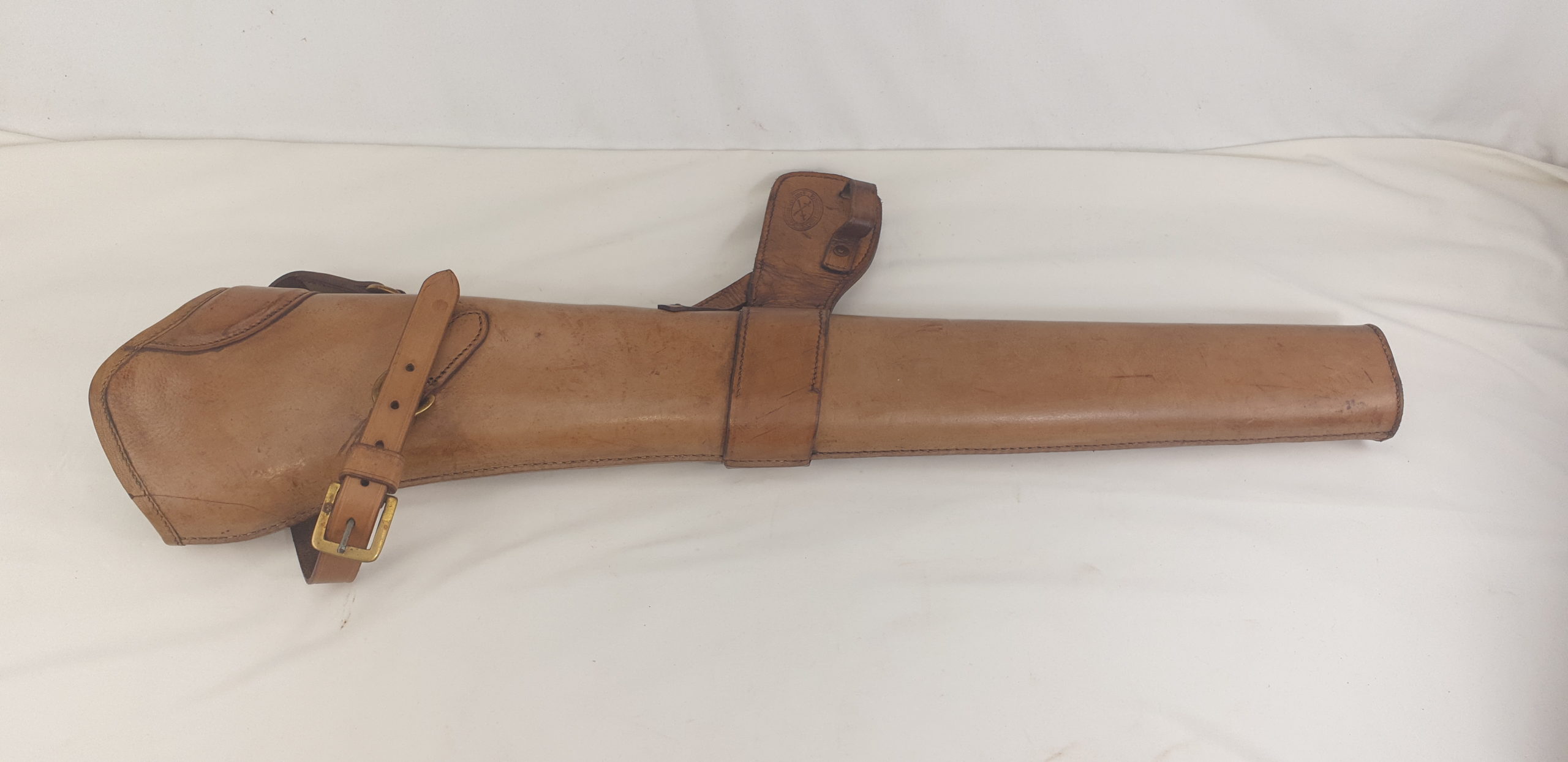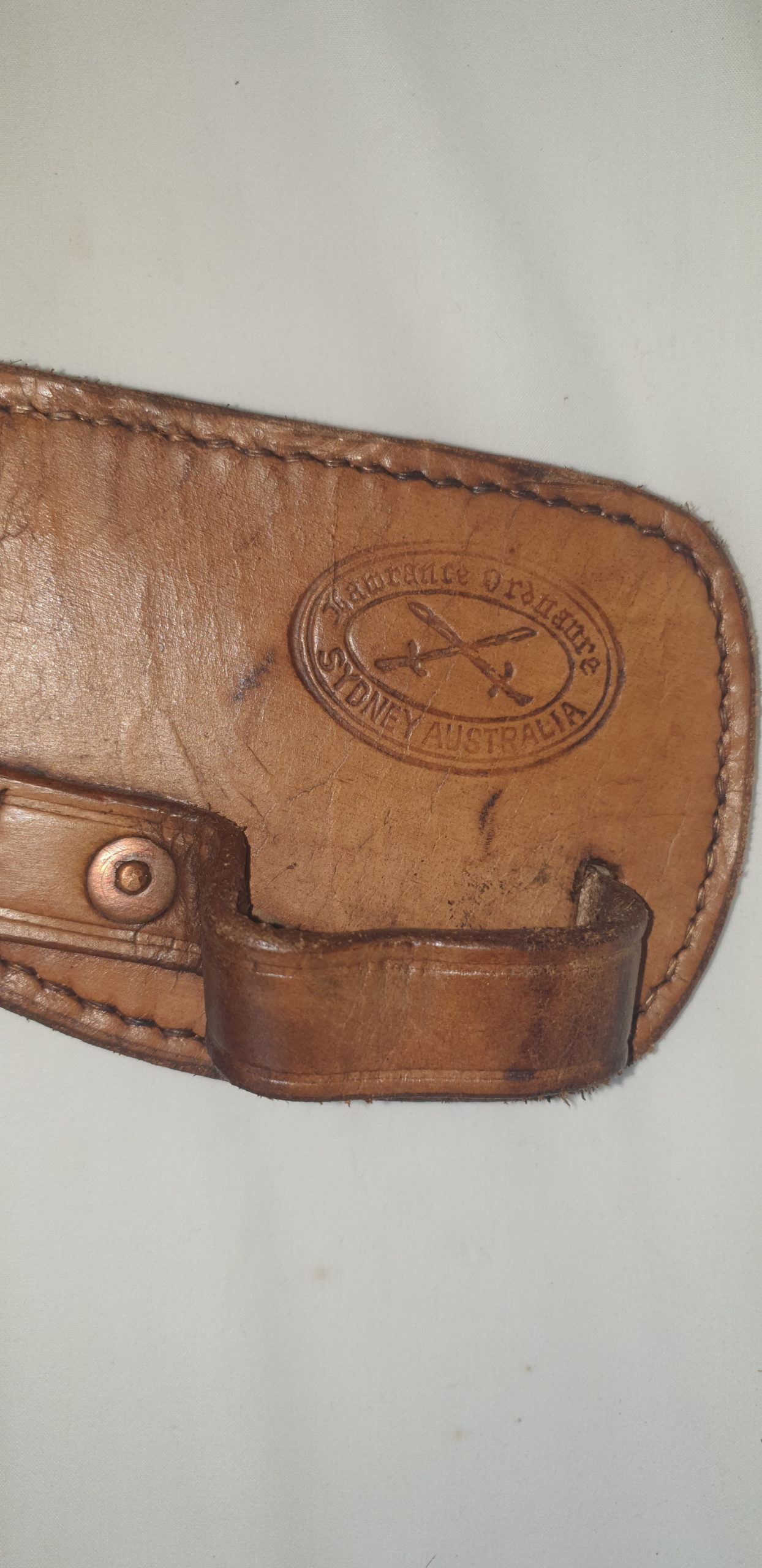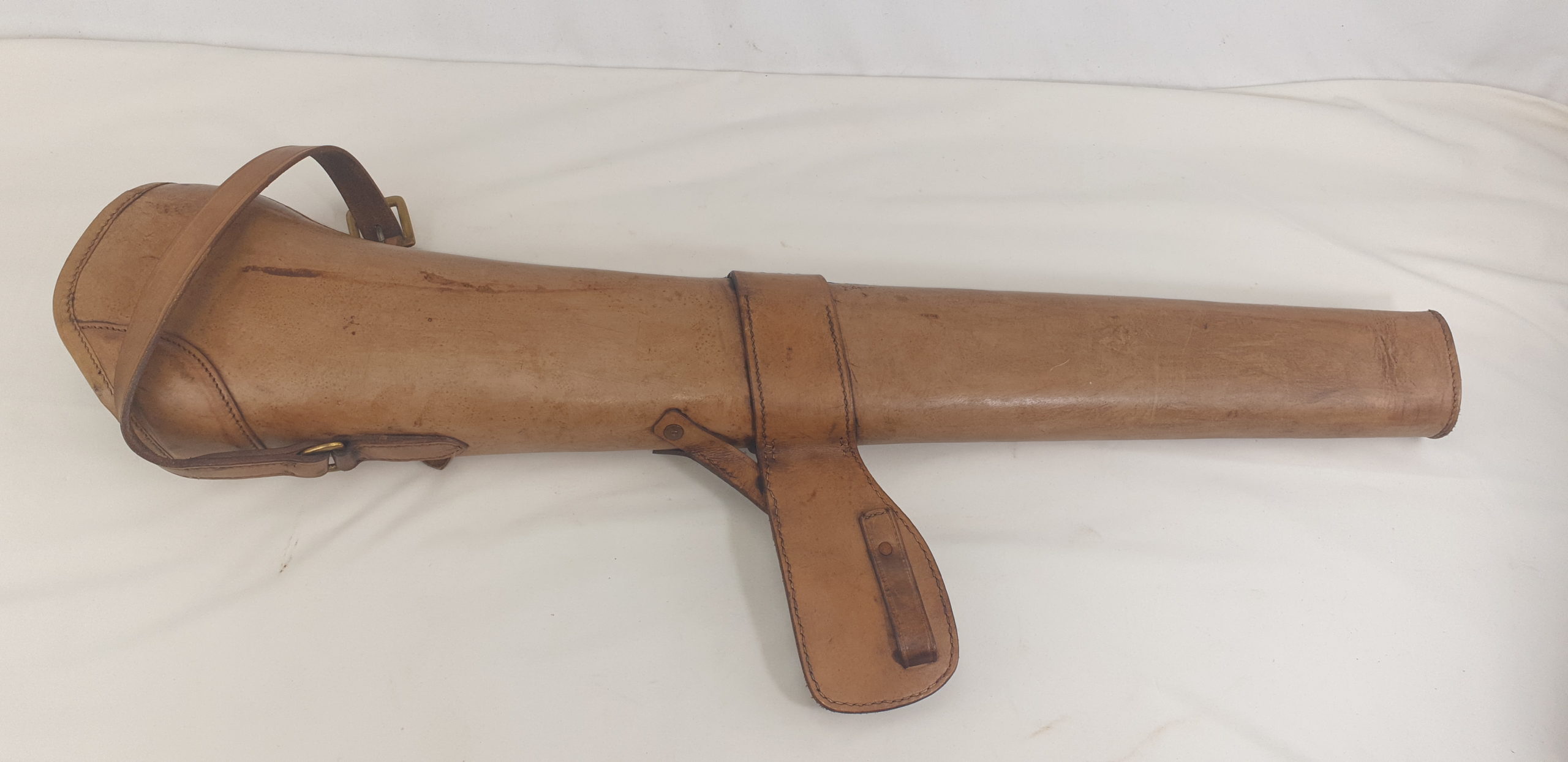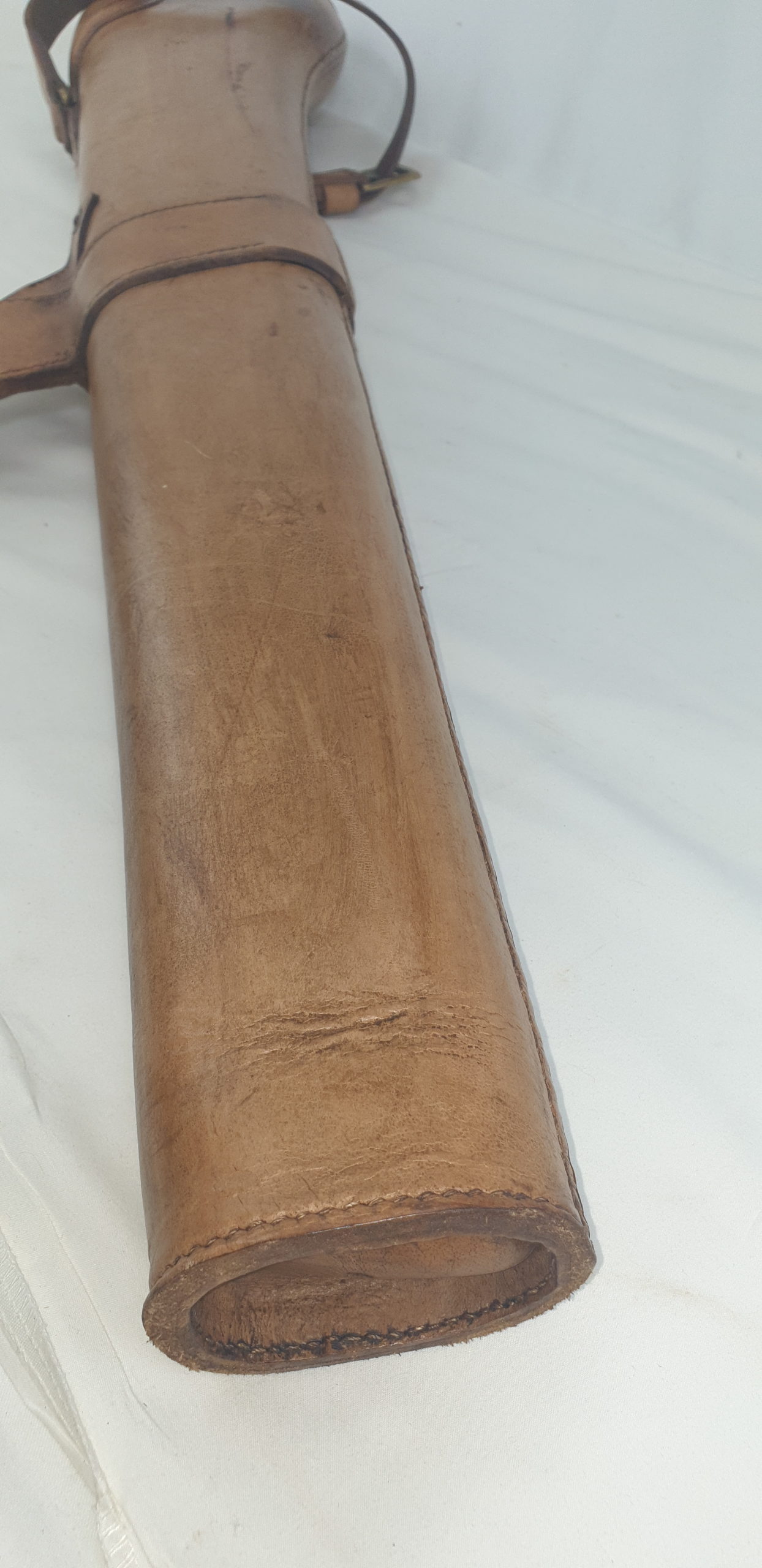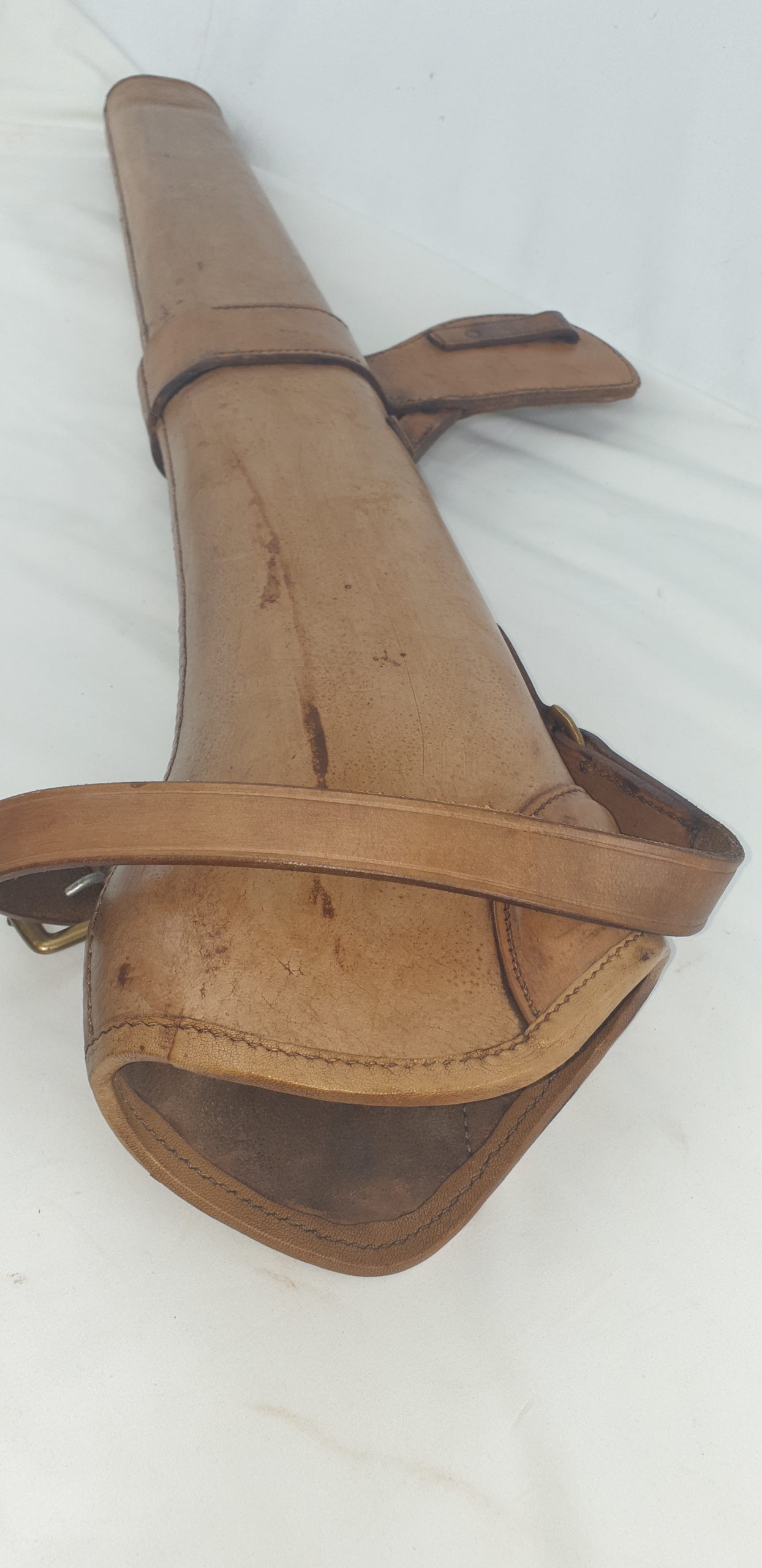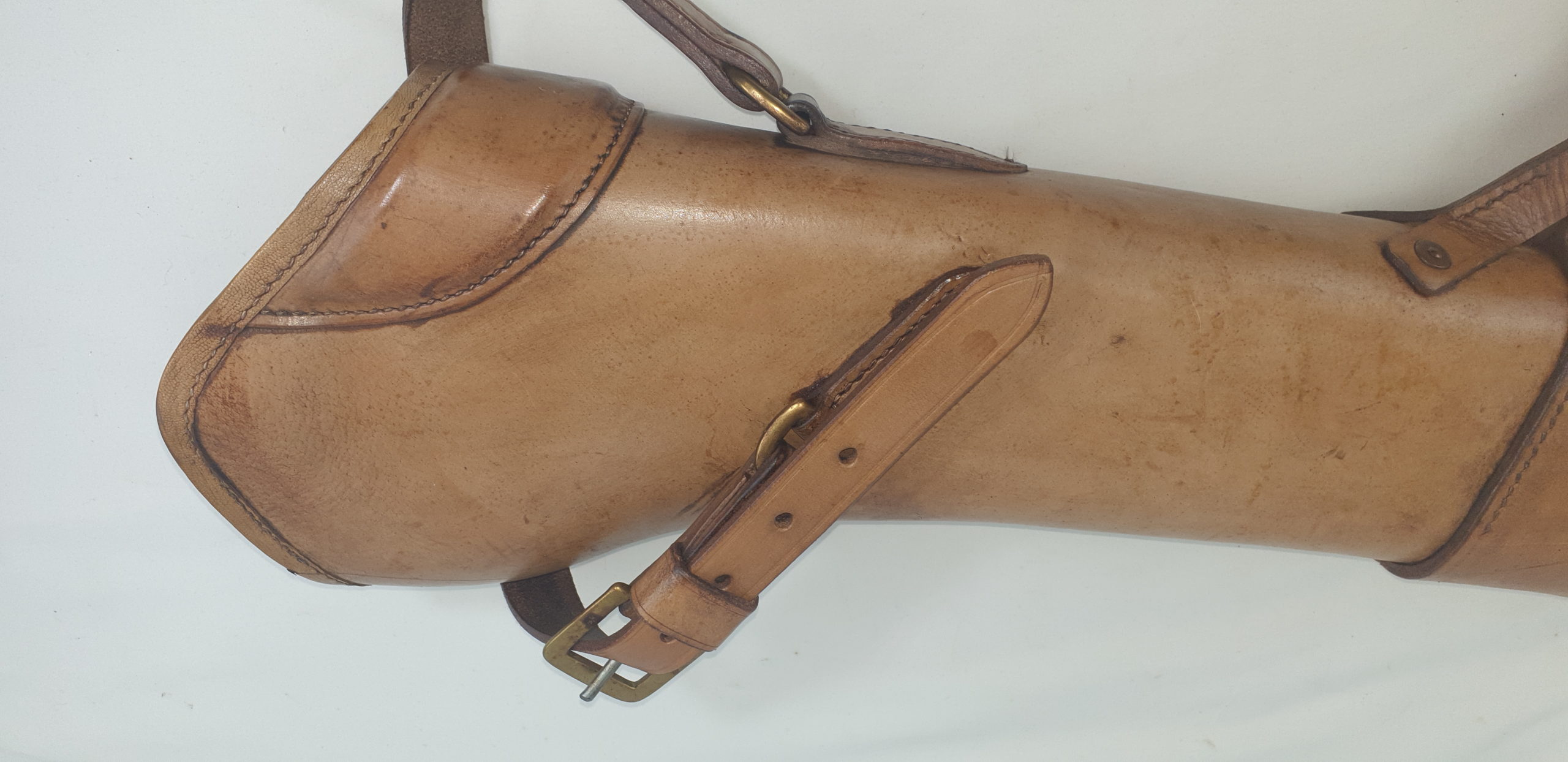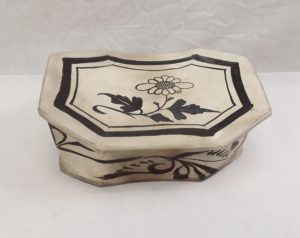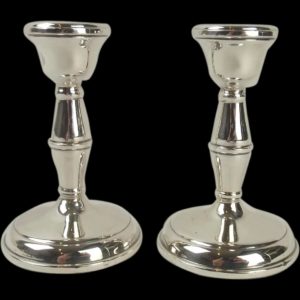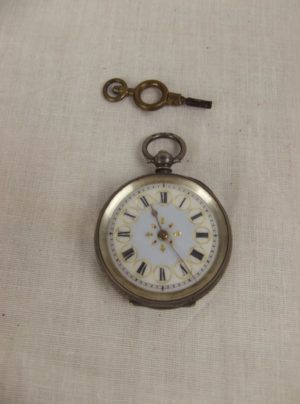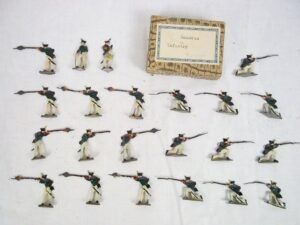~ WW1 British .303 SMLE Leather Bucket Saddle Rifle Holster ~
The .303 SMLE (Short Magazine Lee-Enfield) was the standard-issue rifle for British and Commonwealth forces during World War I. For cavalry units, which played a smaller but still significant role in the war, specialized equipment was necessary to carry rifles while on horseback. One such piece of equipment was the leather bucket saddle rifle holster.
History of the Leather Bucket Saddle Rifle Holster
Cavalry in World War I: While the use of cavalry in World War I decreased as trench warfare and mechanized warfare took precedence, cavalry units were still active, especially in the early stages of the war and in certain theaters like the Middle East and the Eastern Front. Mounted troops needed a practical way to carry their rifles while on horseback, leading to the development and use of saddle holsters.
Design and Development: The leather bucket saddle rifle holster was designed to securely hold the SMLE rifle, allowing a cavalryman to carry it on his horse without it interfering with riding or other activities. The holster needed to be durable, weather-resistant, and capable of protecting the rifle from the elements while allowing for quick access when needed.
Production: These holsters were typically made by various leather goods manufacturers contracted by the British military. The quality of the leather and the craftsmanship varied depending on the manufacturer, but all were made to a standard design to ensure uniformity across units.
Description of the Leather Bucket Saddle Rifle Holster
Material: The holster was made from thick, durable leather, which was treated to withstand the rigors of outdoor use. The leather was usually brown, but over time it could darken or develop a patina from use and exposure to the elements.
Design: The holster had a cylindrical or slightly conical shape, resembling a “bucket,” hence the name. It was designed to fit the SMLE rifle snugly, with the butt of the rifle accessible from the top. The bottom of the holster was typically closed to protect the muzzle of the rifle, while the open top allowed for quick drawing.
Mounting: The holster was attached to the saddle via leather straps or buckles. These would secure the holster to the side of the saddle, usually on the right side of the horse (depending on the preference of the rider), with the rifle positioned to allow easy access but without obstructing the rider’s movement or control of the horse.
Retention: Some models of the holster included a strap or flap that could be fastened over the top of the rifle to keep it secure while riding. This strap could be quickly undone when the rifle was needed.
Use in the Field
Practicality: The leather bucket holster allowed cavalrymen to keep their hands free while riding, but still have their rifles ready at a moment’s notice. In the fluid and often chaotic combat situations that cavalry units encountered, this ease of access was crucial.
Adaptability: While originally designed for mounted troops, some versions of these holsters were also used by motorcycle units and even by infantry for carrying rifles on pack animals or bicycles.
Decline: As World War I progressed and the role of cavalry diminished, the use of these holsters became less common. However, they remained in service with some units, particularly those involved in less conventional warfare, such as in the Middle Eastern campaigns.
Legacy and Collectibility
Historical Value: Today, these leather bucket saddle rifle holsters are valued by collectors of military memorabilia and are considered significant artifacts from the era of mounted warfare. They provide insight into the practical challenges faced by cavalrymen during World War I and the ways in which equipment was adapted to meet those challenges.
Condition and Rarity: The condition of surviving examples can vary greatly, with well-preserved holsters being more valuable. The leather, if not properly cared for over the years, can become brittle or cracked, but examples that have been well-maintained or restored remain highly collectible.
In summary, the .303 SMLE leather bucket saddle rifle holster is an important piece of military history that reflects the transitional period of warfare during World War I, where traditional cavalry tactics were giving way to modern mechanized warfare. Its design was a practical solution for mounted troops, allowing them to carry their standard-issue rifles in a manner that was both secure and accessible.


